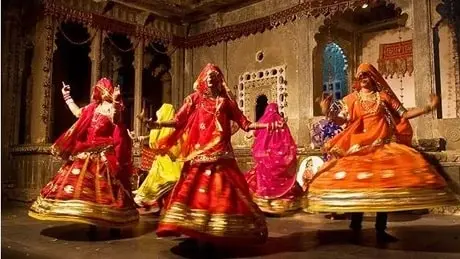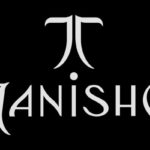The Land of Kinds, Rajasthan, brings forth the cultural richness and colorful expressions in every form of art. Dance and music are the two most well noted artistic expressions of the place in this case. The colorful heritage of the state is expressed here through the dances with utmost respect and beauty. The 4 main dance forms of the place show how culturally rich the place is.
Styles of Rajasthani Dance
1. Ghoomar Dance:

Ghoomar Dance is a famous Rajasthani traditional dance. The state’s hospitable culture stems from the Bhil tribe. So this beautiful dance celebrates Rajasthani ladies, elegance, and community. The beautiful, spherical Ghoomar dance features females spinning to lyrical music. This captivating dance requires twirls and pirouettes. Ghoomar emphasizes femininity and unifies generations during holidays, weddings, and other events.
2. Kalbelia Dance:
Since 2010, Kalbelia Dance has become a UNESCO Intangible Cultural Heritage. It illustrates the tribe’s lifestyle. This hamlet, known for snake-charming, mixes their love of nature and serpents into this mesmerizing dance. Kalbelia dance is rhythmic, quick, and snake-like. Dancers’ intricate silver-embellished black garments accentuate the show. The dancers’ expressive features and graceful moves take listeners to Rajasthan’s culture as they sway to the music.
3. Kathputli Dance:
In Hindi, Kathputli Dance means “puppet” and is a captivating storytelling form from Rajasthan’s past. String-manipulated wooden puppets recount folklore, mythology, and history. Often skilled narrators, puppeteers sing and narrate tales. Kathputli dance preserves Rajasthani storytelling. Puppetry tells tales of heroism, love, and mythology that link the past and present, entertaining all ages. It demonstrates Rajasthanis’ endless creativity.
4. Bhavai Dance:
Folk dance-drama classic, Bhavai has always entertained and expressed Rajasthani culture. It is tied to Bhavai folk theater, a lively blend of dance, drama, and acrobatics. Performers elegantly balance multiple pots on their heads while telling dramatic tales and dancing. Bhavai dance conveys values and concerns. Bhavai shows Rajasthanis’ perseverance and inventiveness to promote societal values.
How History Is Mixed With Rajasthani Dance Forms
Rajasthan’s culture includes centuries-old dances. Rajasthani dances are influenced by indigenous traditions, royal patronage, and historic commerce routes. The state’s social, religious, and cultural life includes these dances.
Rajasthani Dance Elements you Must Not Miss
Rajasthani dance is lavish. Essential Rajasthani dance features:
Colorful Costumes
Rajasthani dancers use extravagant, colorful costumes with mirror work, embroidery, and intricate designs. These clothing improve dancing appearance.
Exuberant Footwork
Rajasthani dances include energetic footwork. Complex dances generate symphonies.
Traditional Music Instruments
Rajasthani dholak, harmonium, and tabla accompany these dances.
Conclusion
When it comes to the Rajasthani dances, then the dance forms like Kalbelia and Ghoomar are two most important ones that are must see. The other dance forms are equally important thanks to their expressive movements and beautiful costumes. These dances are the carriers of the age old tradition one hopes to discover.
Santosh Kumar, He is a SEO + Blogger have 12 years of experience in writing tutorial, informative and product reviews topics.
Page Contents

